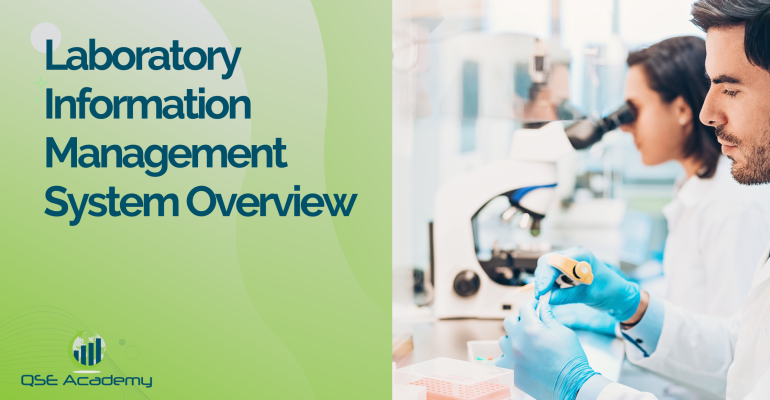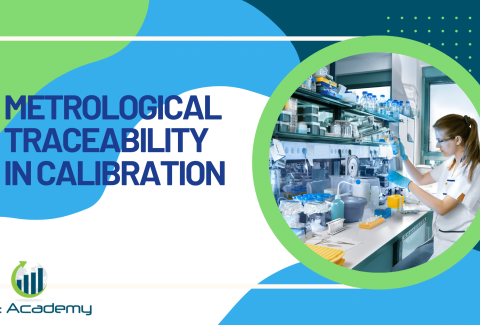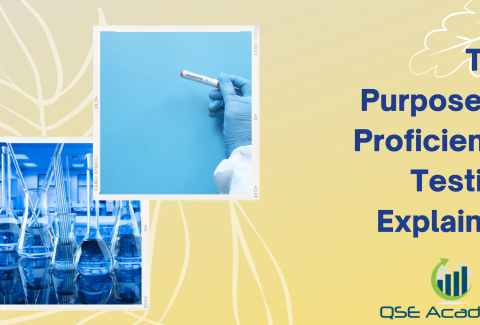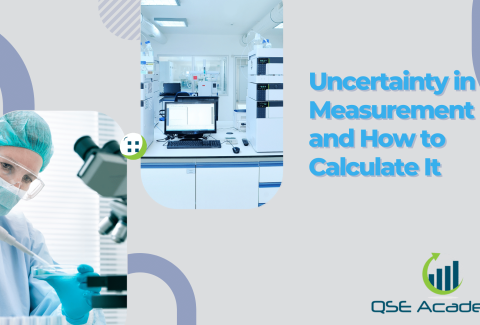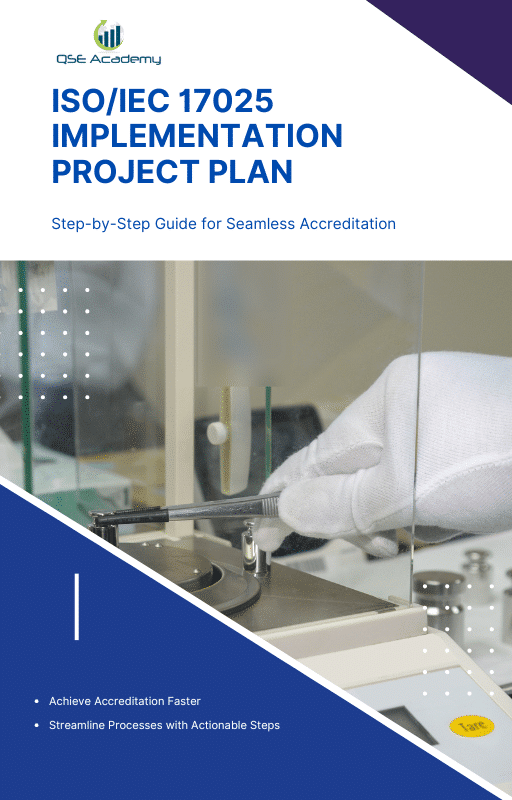Laboratory Information Management System Overview
Laboratory Information Management System Overview
Imagine running a laboratory where samples are constantly being tested, data is piling up, and accuracy is absolutely critical. Now, picture trying to manage all of this with paper logs, spreadsheets, or outdated software—sounds like a headache, right? That’s exactly where a Laboratory Information Management System (LIMS) comes in to save the day.
A Laboratory Information Management System is a specialized software designed to help laboratories organize, track, and manage everything from samples and test results to workflows and compliance requirements. Instead of manually keeping records, a LIMS automates these processes, reducing errors, improving efficiency, and making sure your lab runs like a well-oiled machine.
Think of it like a smart assistant for your lab. Need to locate a specific sample? LIMS can tell you exactly where it is and its current status. Need to generate a compliance report? LIMS does it in just a few clicks. Whether you’re working in a medical lab, a research facility, or an environmental testing center, a Laboratory Information Management System can transform the way your lab operates, saving time and ensuring accuracy every step of the way.
In this article, we’ll dive into everything you need to know about Laboratory Information Management Systems—what they are, how they work, and why they’re becoming essential for modern laboratories. Let’s explore how this game-changing technology can make lab management easier, more efficient, and stress-free.
What is a Laboratory Information Management System?
Let’s break it down—what exactly is a Laboratory Information Management System (LIMS), and why do labs need one?
At its core, a Laboratory Information Management System is software designed to help laboratories manage all the critical aspects of their work—tracking samples, organizing test results, streamlining workflows, and ensuring compliance with industry regulations. It’s like having a super-organized digital assistant that keeps everything running smoothly behind the scenes.
Think about it this way: if you were running a bakery, you’d want a system to track your ingredients, recipes, and customer orders, right? A Laboratory Information Management System does something similar for labs. Instead of manually logging sample data in notebooks or spreadsheets (which can be time-consuming and prone to errors), LIMS automates the entire process. It helps scientists and lab technicians easily access information, track the progress of tests, and generate reports with just a few clicks.
One of the biggest advantages of a Laboratory Information Management System is its ability to handle large volumes of data with accuracy and efficiency. Whether you’re testing water quality, developing pharmaceuticals, or analyzing patient samples, LIMS ensures that all information is stored securely and can be retrieved instantly when needed. No more hunting through stacks of paperwork or worrying about misplaced records!
But LIMS isn’t just about data storage—it’s about making life easier for laboratories. From reducing human errors to improving collaboration between teams, a Laboratory Information Management System plays a crucial role in modern lab operations. And as technology advances, LIMS continues to evolve, offering even smarter solutions to meet the demands of fast-paced scientific environments.
Now that we’ve covered the basics, let’s dive deeper into the key features that make a Laboratory Information Management System so essential for today’s laboratories.
Key Features of a Laboratory Information Management System
So, now that we know what a Laboratory Information Management System (LIMS) is, let’s talk about what makes it such a powerful tool for laboratories. A LIMS isn’t just a fancy digital filing cabinet—it’s a complete system designed to simplify lab operations, improve accuracy, and ensure everything runs like clockwork. Here are some of the key features that make a Laboratory Information Management System essential for modern labs.
Sample Tracking and Management
Ever lost track of a sample or struggled to find test results? That’s a common problem in busy labs, but a Laboratory Information Management System takes care of it effortlessly. LIMS assigns a unique identifier (often a barcode or QR code) to each sample, allowing you to track its journey from collection to disposal. This means no more misplaced samples, lost data, or confusion over which test belongs to which sample. Everything is stored and updated in real-time, making lab work more efficient and stress-free.
Data Storage and Easy Retrieval
Imagine trying to dig through stacks of paperwork to find a test result from three months ago—frustrating, right? A Laboratory Information Management System solves this problem by storing all lab data digitally, so retrieving information takes just seconds. Whether you need to pull up past test results, review experiment logs, or generate reports, LIMS ensures that all critical data is securely stored and easy to access. Plus, cloud-based LIMS options allow labs to access information from anywhere, making remote collaboration a breeze.
Workflow Automation
Running a lab involves a lot of repetitive tasks—logging test results, updating reports, and ensuring compliance with standard procedures. A Laboratory Information Management System automates many of these processes, reducing the chance of human error and freeing up valuable time for lab technicians and scientists. With automated workflows, labs can standardize procedures, ensure consistency, and speed up turnaround times for test results.
Regulatory Compliance and Reporting
If your lab operates under strict regulations—such as ISO 17025, FDA, or GMP guidelines—staying compliant can be challenging. A Laboratory Information Management System helps labs meet these requirements by keeping detailed records, automating report generation, and ensuring audit trails are always up-to-date. Instead of scrambling to gather compliance data during an inspection, LIMS makes reporting simple and stress-free.
These are just a few of the key features that make a Laboratory Information Management System an essential tool for modern laboratories. With improved accuracy, efficiency, and organization, LIMS is revolutionizing the way labs operate. But what about the actual benefits of using a LIMS in daily lab work? Let’s explore that next!
How a Laboratory Information Management System Benefits Laboratories
Now that we’ve covered the key features of a Laboratory Information Management System (LIMS), let’s talk about why labs love using it. Sure, LIMS can track samples and store data, but what does that actually mean for the day-to-day work in a laboratory? In short—it makes everything easier, faster, and more accurate. Here’s how a Laboratory Information Management System benefits labs in real-world scenarios.
Enhanced Accuracy and Reduced Errors
Let’s be honest—manual data entry is risky. One small typo or misplaced decimal point can lead to serious mistakes in lab results. A Laboratory Information Management System helps eliminate human error by automating data collection, calculations, and result entry. With built-in checks and real-time validation, LIMS ensures that everything recorded is accurate and consistent. No more second-guessing test results or spending hours fixing mistakes!
Improved Productivity and Efficiency
Time is valuable in any lab. If scientists and technicians are stuck doing repetitive tasks like logging sample details, manually compiling reports, or cross-checking compliance requirements, they’re not focusing on the important stuff—like research, analysis, and innovation. A Laboratory Information Management System takes care of the administrative workload by automating processes, standardizing workflows, and speeding up sample tracking. The result? Faster turnaround times, smoother operations, and a more productive team.
Better Data Security and Access Control
Laboratory data is sensitive and needs to be protected. Whether it’s patient information, pharmaceutical research, or environmental test results, unauthorized access or data breaches can have serious consequences. A Laboratory Information Management System ensures that only authorized personnel can access specific data, with role-based permissions and secure login credentials. Plus, cloud-based LIMS solutions offer encrypted data storage, protecting valuable information from cyber threats or accidental loss.
Seamless Compliance with Regulations
Many laboratories operate under strict industry regulations, whether it’s ISO 17025, FDA, CLIA, or Good Laboratory Practices (GLP). Meeting these compliance standards can be overwhelming if records are scattered across different systems or paper logs. A Laboratory Information Management System simplifies compliance by maintaining audit trails, tracking changes to data, and generating reports that meet regulatory requirements. That means labs can breeze through inspections without the usual last-minute scramble.
Scalability and Future Growth
One of the best things about a Laboratory Information Management System is that it grows with your lab. Whether you’re a small research facility today or expanding into a multi-location testing center in the future, LIMS is designed to scale. Need to integrate new instruments? No problem. Want to handle a larger volume of samples? Easy. As technology advances, many LIMS solutions are now incorporating AI, cloud storage, and mobile access to ensure labs stay ahead of the curve.
At the end of the day, a Laboratory Information Management System isn’t just about keeping track of samples—it’s about making labs more efficient, secure, and prepared for the future. Now that we’ve seen why LIMS is so beneficial, let’s take a closer look at which types of laboratories use it and how they apply it to their daily work.
Types of Laboratories That Use a Laboratory Information Management System
By now, it’s clear that a Laboratory Information Management System (LIMS) is a game-changer for labs, but you might be wondering—who actually uses it? The truth is, LIMS isn’t just for one type of laboratory. Whether it’s medical diagnostics, pharmaceuticals, food safety, or environmental testing, laboratories across various industries rely on a Laboratory Information Management System to keep their operations running smoothly. Let’s take a look at how different types of labs use LIMS in their daily work.
Clinical and Medical Laboratories
In the healthcare field, accuracy and speed are critical. Clinical and medical labs handle patient samples, process diagnostic tests, and generate reports that doctors rely on for treatment decisions. A Laboratory Information Management System helps these labs manage patient data, track sample statuses, and ensure compliance with healthcare regulations like CLIA and HIPAA. With LIMS, lab technicians can process high volumes of tests efficiently while maintaining accuracy and security.
Pharmaceutical and Biotech Laboratories
Pharmaceutical companies and biotech firms use a Laboratory Information Management System to manage drug development, quality control, and regulatory compliance. From tracking experimental compounds to ensuring Good Manufacturing Practice (GMP) standards are met, LIMS plays a crucial role in pharmaceutical research and production. It also helps with inventory management, ensuring that reagents, chemicals, and raw materials are properly tracked to avoid shortages or waste.
Environmental and Food Testing Laboratories
Ensuring the safety of our water, air, and food supply is no small task, and that’s where a Laboratory Information Management System comes in. Environmental and food testing labs analyze contaminants, toxins, and pollutants, generating reports for regulatory agencies and companies. LIMS helps by automating sample tracking, maintaining detailed records, and ensuring compliance with environmental and food safety standards like ISO 17025 and FDA regulations. With LIMS, these labs can quickly process and report test results, helping to keep our environment and food supply safe.
Forensic and Crime Laboratories
Forensic labs deal with highly sensitive data, from DNA analysis to toxicology reports. A Laboratory Information Management System helps ensure chain-of-custody tracking, which is crucial for maintaining the integrity of forensic evidence. LIMS automates case management, stores digital evidence, and generates reports that are legally admissible in court. By using LIMS, forensic scientists can focus on solving cases while ensuring that every sample is accounted for and documented properly.
Research and Academic Laboratories
Universities and research institutions use a Laboratory Information Management System to manage experiments, analyze data, and collaborate on projects. Whether it’s tracking cell cultures in a biology lab or organizing results from a physics experiment, LIMS ensures that data is stored securely and can be shared among researchers. Many academic labs also use LIMS to streamline grant reporting and ensure that research findings are well-documented.
At the end of the day, a Laboratory Information Management System isn’t just for one type of lab—it’s a versatile tool that helps laboratories across different industries stay organized, efficient, and compliant. No matter what kind of testing or research is being conducted, LIMS provides the structure and automation needed to keep everything running smoothly.
Now that we know who benefits from LIMS, let’s explore how to choose the right Laboratory Information Management System for your specific needs!
How to Choose the Right Laboratory Information Management System
By now, it’s clear that a Laboratory Information Management System (LIMS) can make a huge difference in how a lab operates. But with so many LIMS options out there, how do you choose the right one? The truth is, not all Laboratory Information Management Systems are created equal, and picking the best fit for your lab depends on several key factors. Let’s break down what you should consider when selecting a LIMS that meets your lab’s specific needs.
1. Scalability: Will the Laboratory Information Management System Grow with Your Lab?
Your lab today might look very different from your lab five years from now. Whether you plan to expand your testing capacity, add new services, or integrate advanced technologies, your Laboratory Information Management System should be able to scale with you. Some LIMS platforms are designed for small labs, while others are built for large-scale operations. Make sure to choose a system that can handle future growth without requiring a complete overhaul later on.
2. Integration: Does the LIMS Work with Your Existing Equipment and Software?
A Laboratory Information Management System should make your life easier, not more complicated. That’s why it’s important to check whether the LIMS you’re considering can integrate with your existing instruments, databases, and software. Whether it’s lab analyzers, ERP systems, or cloud storage solutions, seamless integration ensures that data flows smoothly between systems, reducing manual data entry and improving accuracy.
3. User-Friendliness: Is the Laboratory Information Management System Easy to Use?
Let’s be honest—no one wants to spend weeks figuring out how to use complicated software. A good Laboratory Information Management System should have an intuitive interface that makes it easy for lab technicians, scientists, and administrators to navigate. Before making a decision, consider doing a demo or trial run to see if the system feels user-friendly. If it takes too long to learn, it might slow down productivity rather than improve it.
4. Compliance Support: Does the LIMS Meet Industry Regulations?
Different industries have different regulatory requirements, and your Laboratory Information Management System needs to support compliance with standards like ISO 17025, FDA, GLP, or HIPAA. A good LIMS will have built-in compliance features such as audit trails, electronic signatures, and automated reporting, making it easier to meet regulatory requirements and pass inspections without stress.
5. Customization: Can the LIMS Be Tailored to Your Lab’s Needs?
No two laboratories are exactly the same, which means a one-size-fits-all solution might not be the best option. The right Laboratory Information Management System should offer customization options that allow you to tailor workflows, reports, and data fields to match your specific lab processes. Whether you need unique sample tracking methods or specialized reporting tools, flexibility is key.
6. Cloud-Based vs. On-Premise: Which Deployment Option Works Best?
One major decision when choosing a Laboratory Information Management System is whether to go with a cloud-based or on-premise solution.
- Cloud-based LIMS: Offers remote access, automatic updates, and lower upfront costs. Ideal for labs that need flexibility and accessibility from multiple locations.
- On-premise LIMS: Provides greater control over security and data management but requires in-house IT maintenance. Best for labs with strict data protection policies.
Understanding your lab’s IT infrastructure and security needs will help you determine which deployment option is the best fit.
7. Cost: Is the Laboratory Information Management System Worth the Investment?
While budget is always a factor, the cheapest Laboratory Information Management System isn’t necessarily the best option. Consider the long-term value—does it improve efficiency, reduce errors, and save time? Investing in a robust LIMS can lead to significant cost savings in the long run by streamlining operations and preventing costly mistakes.
Final Thoughts
Choosing the right Laboratory Information Management System is a big decision, but taking the time to evaluate your lab’s needs will pay off. The ideal LIMS should not only support your current workflows but also help your lab grow, stay compliant, and operate more efficiently. Whether you’re a small research lab or a large pharmaceutical company, finding a LIMS that aligns with your goals will make all the difference.
Next, let’s take a look at the future trends shaping Laboratory Information Management Systems and how technology is evolving to make lab management even smarter!
Future Trends in Laboratory Information Management Systems
The world of laboratory technology is evolving at a rapid pace, and Laboratory Information Management Systems (LIMS) are no exception. As labs continue to generate more data, work with stricter regulations, and demand faster, smarter solutions, LIMS is transforming to meet these new challenges. So, what does the future hold for Laboratory Information Management Systems? Let’s explore some of the most exciting trends that are shaping the next generation of LIMS.
1. AI and Machine Learning for Smarter Data Management
Artificial intelligence (AI) and machine learning are making waves in almost every industry, and laboratories are no exception. A Laboratory Information Management System integrated with AI can analyze large volumes of data, identify patterns, and even predict trends. Imagine a LIMS that can flag inconsistencies in test results before a human even notices or suggest the best workflow to speed up processes. AI-powered LIMS is set to make lab operations not only more efficient but also more insightful.
2. Cloud-Based Laboratory Information Management Systems for Remote Access
More and more laboratories are moving towards cloud-based Laboratory Information Management Systems, and it’s easy to see why. A cloud-based LIMS allows labs to access their data from anywhere, whether team members are working from different locations or collaborating globally. With automatic updates, secure backups, and lower IT maintenance costs, cloud LIMS is becoming the go-to choice for modern labs that want flexibility and scalability.
3. Blockchain for Enhanced Data Security and Integrity
When it comes to sensitive lab data—especially in pharmaceutical, forensic, or clinical labs—security and integrity are top priorities. Laboratory Information Management Systems may soon incorporate blockchain technology to ensure that all recorded data is tamper-proof and verifiable. This is especially important in regulatory environments where data authenticity is critical. Blockchain could provide an unchangeable record of all lab activities, making compliance audits smoother and more transparent.
4. Internet of Things (IoT) for Real-Time Monitoring
Picture this: lab instruments that automatically update the Laboratory Information Management System in real-time, sending alerts if a sample is out of range or if a machine requires maintenance. That’s exactly what IoT integration in LIMS can do. By connecting lab instruments and sensors to the system, laboratories can minimize downtime, improve accuracy, and ensure seamless data collection without manual intervention.
5. Mobile-Friendly LIMS for On-the-Go Access
Gone are the days when lab personnel had to be tied to a desktop computer to access a Laboratory Information Management System. With mobile-friendly LIMS solutions, scientists and technicians can check sample statuses, update test results, and approve workflows right from their smartphones or tablets. This kind of accessibility is a game-changer, especially for field labs or researchers working in multiple locations.
6. Advanced Automation and Robotics Integration
As automation becomes more advanced, Laboratory Information Management Systems are evolving to integrate with robotic lab assistants. These robotic systems can handle sample processing, test execution, and even quality control, all while feeding data directly into the LIMS. This level of automation will allow labs to operate with even greater efficiency, reducing the need for manual work and speeding up results.
7. Enhanced Personalization and Customization
One-size-fits-all solutions don’t work for every lab, and future Laboratory Information Management Systems are recognizing that. More LIMS providers are offering customizable features that allow labs to tailor workflows, dashboards, and reporting functions to match their unique needs. This means greater flexibility and a system that truly works for your lab’s specific processes.
Final Thoughts
The future of Laboratory Information Management Systems is all about making labs smarter, faster, and more connected. With AI-driven insights, cloud accessibility, blockchain security, and real-time automation, LIMS is set to revolutionize laboratory management in ways we couldn’t have imagined a decade ago.
If you’re considering implementing a Laboratory Information Management System, now is the perfect time. As technology continues to evolve, LIMS will only become more powerful, helping labs work more efficiently, stay compliant, and keep up with the ever-changing world of science.
Next, let’s wrap things up with a quick summary of why a Laboratory Information Management System is a must-have for modern laboratories!
Conclusion: Why a Laboratory Information Management System is Essential
At this point, it’s clear that a Laboratory Information Management System (LIMS) isn’t just a nice-to-have—it’s a must-have for modern labs. Whether you’re managing thousands of samples, ensuring regulatory compliance, or just looking for ways to streamline your lab’s daily operations, a LIMS can make all the difference.
A Laboratory Information Management System takes the guesswork out of lab management. It helps track samples with pinpoint accuracy, reduces human errors, automates tedious tasks, and ensures that every piece of data is securely stored and easy to retrieve. Instead of dealing with paper logs, spreadsheets, and manual record-keeping, labs can rely on LIMS to keep everything organized and running efficiently.
Beyond just saving time and improving accuracy, a Laboratory Information Management System also prepares laboratories for the future. With AI-driven insights, cloud-based access, and automation integration, LIMS is continuously evolving to meet the growing demands of scientific research, healthcare, pharmaceuticals, and many other industries.
So, if you’re running a lab and still relying on outdated systems, it might be time to make the switch. A Laboratory Information Management System isn’t just an upgrade—it’s a complete transformation that can help your lab work smarter, faster, and more efficiently than ever before.
Ready to explore how a LIMS can fit into your lab’s workflow? The future of laboratory management starts now!
I hold a Master’s degree in Quality Management, and I’ve built my career specializing in the ISO/IEC 17000 series standards, including ISO/IEC 17025, ISO 15189, ISO/IEC 17020, and ISO/IEC 17065. My background includes hands-on experience in accreditation preparation, documentation development, and internal auditing for laboratories and certification bodies. I’ve worked closely with teams in testing, calibration, inspection, and medical laboratories, helping them achieve and maintain compliance with international accreditation requirements. I’ve also received professional training in internal audits for ISO/IEC 17025 and ISO 15189, with practical involvement in managing nonconformities, improving quality systems, and aligning operations with standard requirements. At QSE Academy, I contribute technical content that turns complex accreditation standards into practical, step-by-step guidance for labs and assessors around the world. I’m passionate about supporting quality-driven organizations and making the path to accreditation clear, structured, and achievable.

